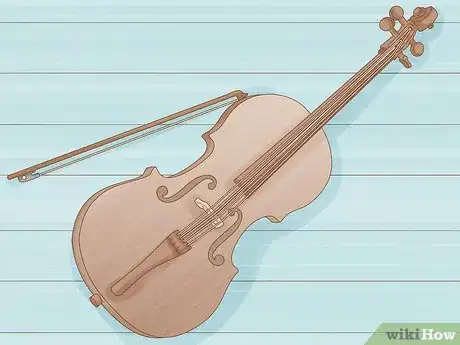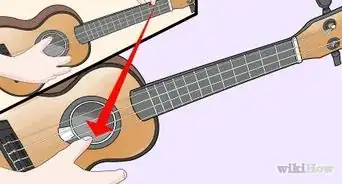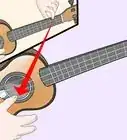This article was co-authored by wikiHow staff writer, Johnathan Fuentes. Johnathan Fuentes is a writer based in the New York City region. His interests as a writer include space exploration, science education, immigration, Latinx cultures, LGBTQ+ issues, and long-form journalism. He is also an avid hiker and has backpacked in Alaska and Newfoundland, Canada. A son of Cuban immigrants, he is bilingual in English and Spanish. Prior to joining wikiHow, he worked in academic publishing and was a freelance writer for science websites. He graduated from Columbia University in 2021, where he studied nonfiction writing and wrote for the student newspaper. He is currently counting down the seconds until the release of Kerbal Space Program 2 in 2023—a game that will almost certainly take up what little free time he has.
There are 20 references cited in this article, which can be found at the bottom of the page.
Learn more...
Cellos and basses are heard everywhere in western classical music. But what makes these instruments different? Though they look alike, cellos and basses play very different musical roles, and you’d never mistake one for the other if you heard them played side-by-side. This article breaks down the key differences between cellos and basses—including their sounds, tunings, and playing styles—and explains how these two instruments complement each other in orchestras worldwide.
Things You Should Know
- Cellos and basses are members of the violin family, which also includes the viola and violin.
- Cellos have a tenor range (C2 - A5), while basses have a lower “bass” range (E1 - G4). Cellos are tuned in fifths, while basses are tuned in fourths.
- Basses are larger and heavier than cellos. Bass players usually have to stand while playing to reach all the notes, but cellists can easily play seated.
- Cellos play a wider variety of roles in music than basses. You’ll often hear cellos playing solos and melodies, while basses are usually in the background.
Steps
References
- ↑ https://cardinalscholar.bsu.edu/bitstream/handle/123456789/203302/BurtonPa_2022-2_BODY.pdf?sequence=1
- ↑ https://digital.library.unt.edu/ark:/67531/metadc1157540/m2/1/high_res_d/MEYER-DISSERTATION-2018.pdf
- ↑ http://hyperphysics.phy-astr.gsu.edu/hbase/Music/bass.html
- ↑ https://scholarworks.gvsu.edu/sss/87/
- ↑ http://hyperphysics.phy-astr.gsu.edu/hbase/Music/cello.html
- ↑ http://hyperphysics.phy-astr.gsu.edu/hbase/Music/bass.html
- ↑ https://www.independent.co.uk/arts-entertainment/music/news/freddie-mercury-25-years-death-we-are-the-champions-vocals-lyrics-a7436346.html
- ↑ https://www.theguardian.com/news/2003/jul/07/guardianobituaries.artsobituaries
- ↑ http://www.clt.astate.edu/tcrist/orch/str/stringtechniques.pdf
- ↑ http://www.alangoldblatt.com/specs/Bass.pdf
- ↑ http://www.alangoldblatt.com/specs/Cello.pdf
- ↑ http://waddleviolins.com/downloads/Weights_Nov2003CASJournal.pdf
- ↑ https://www.davidgage.com/pdf/GageCaseDimensions.pdf
- ↑ http://hyperphysics.phy-astr.gsu.edu/hbase/Music/cello.html
- ↑ http://hyperphysics.phy-astr.gsu.edu/hbase/Music/bass.html
- ↑ https://www.wku.edu/music/documents/accidentals.pdf
- ↑ http://hyperphysics.phy-astr.gsu.edu/hbase/Music/cello.html
- ↑ https://www.britannica.com/art/double-bass
- ↑ https://nyphil.org/about-us/meet/musicians-of-the-orchestra
- ↑ https://blogs.law.gwu.edu/mcir/2018/12/20/transpose/
- ↑ https://utminers.utep.edu/charlesl/transpose.html
- ↑ https://musicrising.tulane.edu/discover/instruments/bass-guitar/
- ↑ https://www.iup.edu/music/community-outreach/string-project/students/checkpoints-for-home-practice-bass.html
- ↑ https://sites.utexas.edu/stringproject/files/2015/02/POSTURE_CHECKLIST_2015REVISION.pdf































































